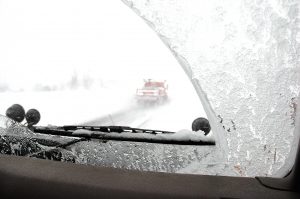 Snowplow operators face harsh driving conditions and must also deal with fatigue and drowsiness. A recent Clear Roads research project identifies factors that cause driver fatigue in snowplow operators and recommends cost-effective solutions to help reduce it.
Snowplow operators face harsh driving conditions and must also deal with fatigue and drowsiness. A recent Clear Roads research project identifies factors that cause driver fatigue in snowplow operators and recommends cost-effective solutions to help reduce it.
The project included a survey that was sent to 33 Clear Roads -member states to gather data on snowplow operators’ experiences with fatigue. More than 2,000 snowplow operators from 23 Clear Roads states responded.
Nearly all the respondents (94 percent) reported feeling fatigue at some point while operating a snowplow during winter weather events. The majority of vehicle operators (59 percent) reported their shifts of 8 to 16 hours included both daytime and nighttime segments. Smaller proportions reported that they worked primarily during the day (22 percent) or primarily at night (18 percent).
Survey results also indicated that more experienced operators were more prone to fatigue, and those who worked shifts lasting longer than 16 hours reported significantly higher levels of fatigue.
Based on the results and analysis, researchers ranked the in-cab and external equipment that caused fatigue. The top four equipment-related sources of fatigue were bright interior lighting, standard windshield wipers, misplaced or insufficient auxiliary lighting, and old or uncomfortable seats.
Among the non-equipment-related sources of fatigue, the most commonly reported factor was silence (lack of music or talking), followed by length of shift, lack of sleep, and insufficient breaks.

Using the same ratings, researchers developed a list of recommended actions that can be implemented by agencies to decrease driver fatigue. The recommendations were based on a comparison of each solution’s costs (equipment costs and potential risk of adversely affecting fatigue) and benefits (effectiveness in reducing operator fatigue).
Among the researchers’ equipment-related recommendations, the most cost-effective called for adding:
- A CD player or satellite radio to deliver music or speech, preventing short-term fatigue.
- Dimmable interior lighting to reduce reflections on the windshield and windows, providing better visibility.
- Dimmable warning lights to reduce back-reflected light from the warning lights, lowering visual distraction.
- Snow deflectors to reduce the amount of snow blown on the windshield, providing better visibility.
- Heated windshields to reduce snow and ice buildup on the windshield, providing better visibility.
Non-equipment solutions included encouraging adequate breaks, limiting shifts to 12 consecutive hours when feasible, developing a fatigue management policy, encouraging a healthy lifestyle, and designating dedicated rest locations for operators.
According to the report, both the equipment-related and non-equipment-related solutions provide easy and quick corrective actions that agencies can implement immediately to increase the health and safety of snowplow operators.
Learn More:
- Identification and Recommendations for Correction of Equipment Factors Causing Fatigue in Snowplow Operations (Clear Roads, Nov. 2017) (LRRB/MnDOT 2017-31, July 2017)
- “Truckers disregarding sleep apnea treatment show greater crash risk,” CTS Catalyst (Apr. 2018)
This article originally appeared in the September issue of the LTAP Technology Exchange.